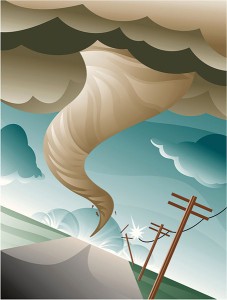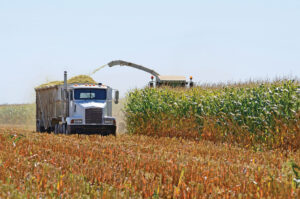 In mid-November our state was hit by EF3 tornados that swept across 15 counties and federal disaster assistance was approved for Champaign, Douglas, Fayette, Grundy, Jasper, LaSalle, Massac, Pope, Tazewell, Vermilion, Wabash, Washington, Wayne, Will and Woodford counties.
In mid-November our state was hit by EF3 tornados that swept across 15 counties and federal disaster assistance was approved for Champaign, Douglas, Fayette, Grundy, Jasper, LaSalle, Massac, Pope, Tazewell, Vermilion, Wabash, Washington, Wayne, Will and Woodford counties.
At Southern Illinois Electric Cooperative, Director of Communications Jerri Schaefer said, “The tornado destroyed 29 homes on Unionville Road near Brookport, Ill., changing the lives of some of our members forever. There were two fatalities. In one family a husband and wife were ripped out of their home. The husband landed in a pond 200 feet away and had a broken leg and dislocated hip. His wife did not survive.”
Growing up in Oklahoma watching tornados is almost a sporting event, but we knew when that siren went off, or mom or dad yelled “get to the cellar,” you better go that second. In school we knew where to go and we prepared with tornado drills. In Oklahoma we knew tornados were a threat just about any time of year.
In December we were hit pretty hard again in southern Illinois with an ice storm. While ice storms can cause larger and longer lasting power outages, they both can leave behind a very dangerous situation.
After any storm you have to be very observant of any lines on the ground or hanging very low. You should consider any power line you see as energized. Don’t touch it. Don’t go near it until your utility gives you a clear communication that it is safe to return to a disaster site.
Keep others away from downed or low-hanging lines, especially children who may not understand the danger. Even if a line is lying on the ground it may not arc and spark or appear energized. If it is lying on snow, snow can actually provide a little insulation and may look de-energized, but be very deadly. Storms also create a lot of moisture in areas near electricity, further increasing the danger of electrocution.
A line may be down and de-energized by your utility, but someone with a generator could backfeed energy onto the line you are near. If you are going to use a generator after a storm outage, do not plug it directly into your home’s wiring system unless you have installed a transfer switch. Also, follow all the safety rules for fueling and providing ventilation for the generator. It should be used at least 15 feet from your house and never in the garage. Carbon monoxide is a silent killer and 755 lives were lost between 1999 and 2011 from generators alone.
We have a long winter still ahead of us and many of the dangers are out on the roads. If you are ever in an accident involving a downed power line on your vehicle, please, please, please stay in the vehicle until help arrives. Don’t let good Samaritans get near the lines or your car until linemen cut the power to the line. It is easy to panic. Don’t!
Before the next storm or winter road disaster take some time to prepare your disaster kit with:
❆ Water – stock up on bottled water for consumption.
❆ Food – have enough non-perishable food items to last at least three to seven days.
❆ Utensils – include a non-electric can opener, cooking tools, paper plates and plastic utensils.
❆ Blankets, pillows and warm clothing items.
❆ First aid kit, medicine and prescription drugs.
❆ Flashlight and batteries – be sure to include extra batteries.
❆ Radio and clock – use battery-operated radios and clocks; also consider purchasing a National Oceanic and Atmospheric Administration (NOAA) weather radio.
❆ Telephone – keep cell phone chargers (wall, car and/or solar) on hand and, if you have a landline, a traditional (not cordless) telephone set.
❆ Supplies for alternate heating methods, such as a fireplace or wood-burning stove, and a fire extinguisher.
❆ For your car, stock it with a flashlight with extra batteries; first aid kit; water and non-perishable snacks; blankets; windshield scraper and brush; booster cables; sack of sand or kitty litter; tool kit; and shovel. The items can be packed in a backpack or rubber tub.

For additional information on emergency preparedness, and current storm information visit the Ready Illinoiswebsite at www.Ready.Illinois.gov









